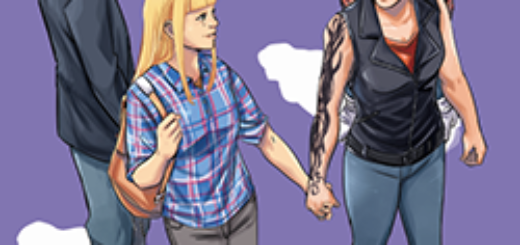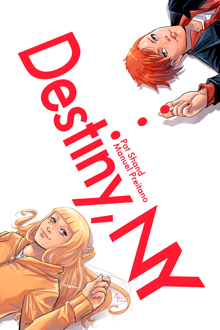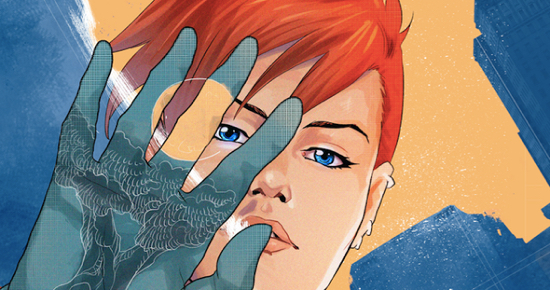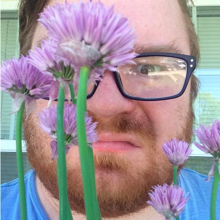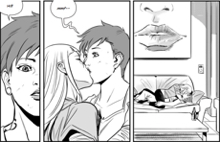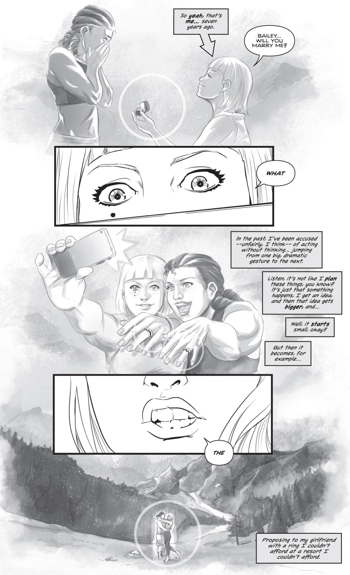Joe Corallo: Destiny NY – Take 2!
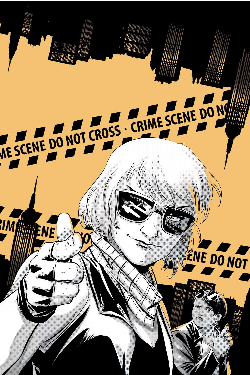 Pat Shand is a prolific writer and editor of comics and prose novels. In the past year, Pat launched his own publishing arm, Space Between Entertainment, to launch new graphic novel series including Destiny, NY which had a successful Kickstarter for its first volume last fall.
Pat Shand is a prolific writer and editor of comics and prose novels. In the past year, Pat launched his own publishing arm, Space Between Entertainment, to launch new graphic novel series including Destiny, NY which had a successful Kickstarter for its first volume last fall.
With the Kickstarter for Destiny, NY Volume 2 just one month away, I talked with Pat Shand about this new volume, running a publishing arm and using crowdfunding to make it all happen.
JC: The first volume of Destiny, NY wraps up nicely with a pretty happy ending. Can you tell us a bit about where the story is going in Volume Two? Any new characters or developments people can look forward to seeing unfold?
PS: With the first volume, we introduced this world where magic is a real and accepted part of everyday life. It’s mundane, to an extent. Logan is our lead character, and she was the subject of a prophecy when she was a kid but she fulfilled her destiny at the age thirteen. Our story is about what happens after that. Now that she’s in her late twenties, how does someone who has been told she’s already done the greatest thing she’ll ever do figure out how to live a normal life?
Now that our world and cast are introduced, we’re digging into the relationships. It’s personal this time. Logan has been dating Lilith, the daughter of a broken mystical crime family, for a year now and life is starting to fall into place. But Lilith’s past is coming back to haunt them, and Logan gets a surprise that leaves her relationship in jeopardy. We’re also getting to know the other characters, like Gia and Anthony and Joe Rollins and Cherry, a lot better.
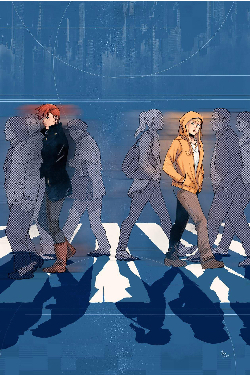 This volume is a lot longer, too, and spans more time than the first. We’re putting everything into this story.
This volume is a lot longer, too, and spans more time than the first. We’re putting everything into this story.
JC: Rosi Kampe is taking over as the series illustrator while Volume One illustrator, Manuel Preitano, is returning for a short comic to be including in Volume Two. What made Rosi and excellent fit to take over main illustration duties and what are both the similarities and differences fans of Volume One should expect in their approach to your scripts?
PS: Rosi illustrated a short Lilith story at the end of Volume One, and that was pretty much all we needed to see. I’ve always been a fan of Rosi’s stuff, so when we were figuring out the direction for Volume Two, Rosi was the first and only artist that came to mind to take the reigns from Manuel, who established all of the characters with his amazing work in Volume One. Rosi is bringing heart, beauty, dynamic realism, and a ton of style to the book. The pages are coming in now, and it’s the most stylish book I’ve ever worked on. It feels like I’m in New York City when I look at Rosi’s pages, which is exactly what we hoped for.
Also, Manuel is co-creator on Destiny, NY so he’s also doing the cover and all of the chapter breaks. He’ll be back for more stories down the road.
JC: What makes Kickstarter the best avenue to make Destiny, NY and other titles from Space Between Entertainment a reality? What advice would you give other comics creators looking to fund projects through Kickstarter?
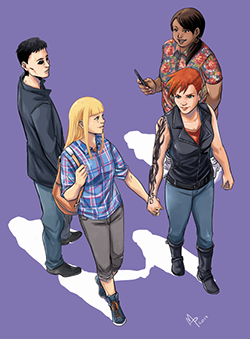 PS: I pitched Destiny, NY around a bit at first and it got really close to getting picked up by a publisher I love. When that didn’t happen, and I saw so many creators I admire succeeding on Kickstarter, I knew that it was time to give it a shot. Now? I’m so glad no one picked up Destiny, NY. It would’ve run five issues, probably. With the series fully under my team’s control, it’ll go for as long as we want.
PS: I pitched Destiny, NY around a bit at first and it got really close to getting picked up by a publisher I love. When that didn’t happen, and I saw so many creators I admire succeeding on Kickstarter, I knew that it was time to give it a shot. Now? I’m so glad no one picked up Destiny, NY. It would’ve run five issues, probably. With the series fully under my team’s control, it’ll go for as long as we want.
Every time we do a Kickstarter, once it’s clear the book is going to be successful, the offers start flooding in. And listen, I’m always looking to put new creator-owned books out through other publishers, but once we’re funded on Kickstarter, what’s the reason? I get that distribution is a major perk of pairing with a Top 10 publisher, but having 100% creative control is a much, much bigger perk.
The only advice that I can give is to be genuine and put out great, unique content. Every campaign I see is different. Anyone who tells you they have the Kickstarter advice hasn’t run enough campaigns to see that there is no real key to winning. Adapt to the situation, because it really will be different every time.
JC: There are quite a few smaller comics publishers out there trying to get by. You had left a position as an editor over at Zenescope to focus on starting up your own publishing arm. I imagine that wasn’t an easy decision. You said that having 100% creative control is a big perk, but what are some of the other ups as well as some of the downs, other than not having the same access to major distribution, of taking the route of starting your own publishing arm?
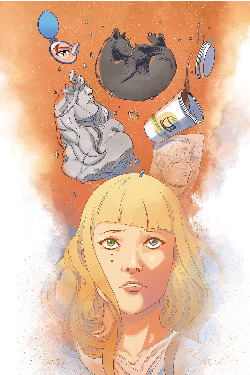 PS: It’s the difference between getting a rate for a gig and playing a long term game to turn your passion into your living. I’m still freelancing, but I was working 18 hours a day on books that I didn’t own, that I had no stake in. It would’ve been smart to leave a year earlier, but in the end steadily paying work in comics is very hard to come by, so I didn’t.
PS: It’s the difference between getting a rate for a gig and playing a long term game to turn your passion into your living. I’m still freelancing, but I was working 18 hours a day on books that I didn’t own, that I had no stake in. It would’ve been smart to leave a year earlier, but in the end steadily paying work in comics is very hard to come by, so I didn’t.
Major distribution is definitely a hurdle, but it’s one that we’re working toward overcoming. I think something that holds a lot of publishers down, bigger ones too, is that they see other publishers as competition. That isn’t the case. If you’re creating unique content, your only competition is the limitations you set for yourself.
JC: That’s a great, positive perspective and I hope that’s something people take to heart when reading this. Representation is very important to you. You write a lot of stories where women are the key players as well as showcasing the LGBTQ community and other underserved communities with Destiny, NY possibly being your best example of that yet. Why is representation important to you personally and how do you tackle these characters and their stories as an ally who doesn’t have the first-hand experience with some of the issues presented?
PS: I’m writing the world that we live in. There are probably more stories about New York than any other city in the history of fiction, and it’s rarely depicted as the city I know.
I used to write a lot of theatre and would produce plays and staged readings in the city, and the environment there did not prepare me for the world of freelance comics. I’ve been told by publishers that writing one queer character in a world where literally hundreds of characters exist borders on unrealistic. I’ve been told it looked like we were “trying too hard” when I pitched the idea of a more diverse cast of a book that had eight lead characters, four of which were blonde women. That kind of shit just doesn’t reflect our world in a genuine way.
JC: It’s horrible that there are still people like that in power that feel that way. Not only do you advocate for representation on the page, but behind it as well. There are a lot of different kinds of people from all backgrounds that are contributing to Destiny, NY Volume 2. As a creator and an editor, what makes a diverse talent pool and hiring people of different backgrounds important to you? What more do you feel needs to be done in the business overall?
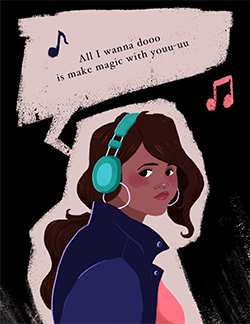 PS: Bring in new voices, foster new talent. The industry’s fatal flaw is that it is almost entirely insular. People who have read comics their entire life are the ones who grow up to write them, and so on. That makes for some great stories, sure, but when it is the story of almost every creator, that means we have an industry of content designed for people who already love comics. There is a decreasing window of growth. I want to read books unlike any I’ve ever read before by new creators with new voices and new things to say.
PS: Bring in new voices, foster new talent. The industry’s fatal flaw is that it is almost entirely insular. People who have read comics their entire life are the ones who grow up to write them, and so on. That makes for some great stories, sure, but when it is the story of almost every creator, that means we have an industry of content designed for people who already love comics. There is a decreasing window of growth. I want to read books unlike any I’ve ever read before by new creators with new voices and new things to say.
There’s a reason that everyone watches movies and TV, everyone reads books, everyone listens to music… but comics is still a niche art form. Let’s look outside of ourselves and build.
JC: Speaking of other contributors in Destiny, NY, both volumes have multiple back up stories which is fairly uncommon in the market today. What inspired you to take that route? Can you tell me what readers can expect in this next batch of backup stories?
PS: We have a really big supporting cast, but the focus is heavily on a handful of characters. Logan, Lilith, Augusten, and Gia get most of the page space, but I wanted a place to tell self-contained stories about the rest of the cast. I thought of doing them myself first, but the idea of collaborating with other creators seemed so much more fun. Also, it’s a way for us to bring in creators whose content we love to tell stories that are important to them using our characters.
Shannon had the great idea to bring on Jenny Owen Youngs and Kristin Russo, who do (among other things) the Buffering the Vampire Slayer podcast, Everyone is Gay, A-Camp… a ton of amazing things. One of my favorite vloggers, Lauren Reilly, is scripting a story for us about Logan’s cat, Brody. Erica Schultz is pairing with Natasha Alterici to tell a really personal story through the lens of Lilith and Song’s relationships. It’s a way to explore aspects of the characters that won’t fit in the ongoing narrative while collaborating with our favorite writers and artists. It’s one of my favorite things that we do.
JC: When it comes to indie comics one of the most underused and underappreciated contributors is the editor. You have extensive editorial experience yourself. Could you tell us about how you got Shannon Lee involved, why editors are so important for indie and small publisher comics, and if you could, share a moment where Shannon really helped you realize something you hadn’t thought of before?
PS: Shannon and I were co-workers at Borders Books, back when that was a thing. After our location Chapter 11ed, we remained close friends. She has always been an art fanatic, so I would send her stuff from Destiny, NY for fun as our first issue came together. When we were moving into production on the full volume, I thought back to this time when I was in Borders on break, racing to meet a deadline to submit a short story to this zombie anthology. Shannon came in and coached me through it in a way that was empathetic and creative but also forceful, which is, I now know, the exact (and rare) combination that makes a perfect editor.
Shannon was instrumental in making Destiny, NY: Volume One what it is. There are entire scenes that exist because Shannon said “Hey, this storyline needs something more” or “This doesn’t get answered in a satisfying way.” She also talks me through big moments, asking about my motivation and directing, debating with me over possible ideas… everything, really. I think Destiny, NY is my best writing by a large margin, and that’s in part thanks to Shannon’s presence.
It’s why, when I decided to go all in with my company Space Between Entertainment, I brought her on as Editor-in-Chief. I’ve seen her dissect the projects she’s worked on and study the beating heart of each title. A good editor finds out what works about a book and helps the book be the best version of that.
JC: Before we wrap this up, I want to ask you why you feel Destiny, NY is an important story to tell.
PS: On one level, because it’s the most personal story I’ve ever told. The relationship, family, creative, and more existential struggles I have are all in there – Destiny, NY has become my way of asking the big questions. It’s the book I put everything into.
From a genre perspective, the hook is that this is the part of the story you don’t see. Prophecies are such a huge part of fantasy, and the story always ends when the protagonist fulfill their destiny. To me, the most interesting part of that is the “What next?” you know? How can someone like Harry Potter live a normal life after doing what’s supposedly the greatest thing he’ll ever do at 17?That’s our hook, and of
That’s our hook, and of course, the book is about so much more than that, but I do think that core concept is what sets us apart. We take the idea of an urban fantasy and ignore the magic. What happens to US as humans in a world like this?
JC: Thank you for taking the time to chat with me, Pat! Everyone else keep an eye out on September 1st at 10:00 am EST when the Kickstarter for Destiny, NY Volume 2 goes live!

